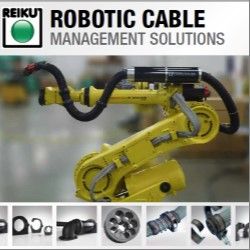Dissembling a 1980s Kuka Robot
Intel's 3-D Printed Robot "Jimmy"
More For Less
TravelByDrone
Blocky: A Graphic Programming Environment for ROS
Why Was This Man Smiling At AUTOMATICA 2014?
iCEstick $25 FPGA Evaluation Kit
Cable Management Systems Do the Robot
USB 3.0 Steps Up To The Plate
Paraplegic in robotic suit kicks off World Cup
Response by Ray Kurzweil to the announcement of chatbot passing the Turing test
Tessel: A Microcontroller That Runs JavaScript
Open-source 3D Printed Life-size Robot
Algorithm that harnesses data from a new sensor could make autonomous robots more nimble.
The Rubik and the Robot
Records 1471 to 1485 of 1963
First | Previous | Next | Last
Industrial Robotics - Featured Product

